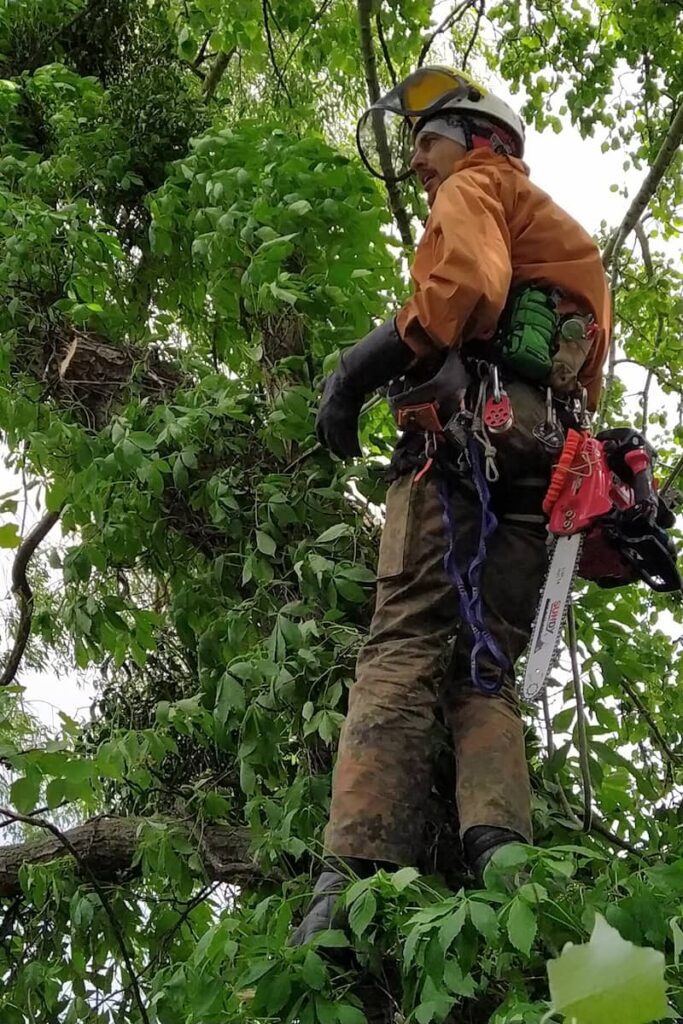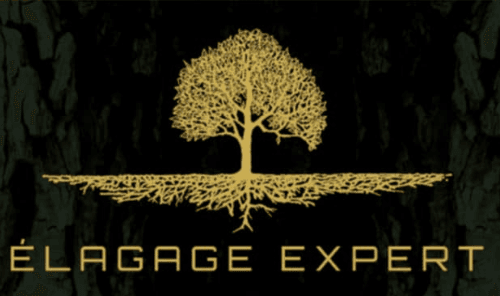
1. Why Fertilize a Tree: Understanding the Basics
- Providing Nutrients
When you wonder *why fertilize a tree*, the primary reason is to supply essential nutrients. Trees need nitrogen (N) for foliage development, phosphorus (P) for root growth and flowering, and potassium (K) for resistance to disease and stress. In a natural environment, these elements come from the decomposition of organic matter (fallen leaves, decaying branches, etc.). In urban or semi-urban areas, the soil is often poor or compacted, making these nutrients less accessible. - Strengthening Resistance to Diseases and Weather Conditions
*Why fertilize a tree* in regions with harsh winters like Montreal, Laval, or Ahuntsic? Because a well-nourished tree develops stronger immune defenses against fungal, bacterial, and pest-related diseases, while also better withstanding the temperature fluctuations typical of the Quebec climate. - Improving Air Quality and Landscape Aesthetics
Healthy trees help improve air quality by capturing CO₂ and filtering particles. They also enhance the beauty of residential neighborhoods, from Terrebonne to Sainte-Thérèse, including Repentigny and Rosemère. Therefore, understanding *why fertilize a tree* also means recognizing the ecological and aesthetic benefits it provides.
2. The Critical Influence of Soil pH
2.1. What is pH?
pH (potential of hydrogen) is an indicator of the acidity or alkalinity of the soil. On a scale from 0 to 14:
- A pH below 7 indicates acidic soil.
- A pH of 7 is neutral.
- A pH above 7 indicates alkaline or basic soil.
Most trees thrive in slightly acidic soil (6 to 7). *Why fertilize a tree* with soil that has an improper pH? Simply because an unsuitable pH makes nutrients less available. For example, in overly acidic soil, the tree will struggle to absorb phosphorus and calcium. In overly alkaline soil, iron and zinc deficiencies may develop.
2.2. Test the pH Before Any Fertilization
Il est vivement conseillé de tester le pH du sol, surtout dans des zones où le sol peut être perturbé par l’urbanisation (Laval, Montréal, Ahuntsic, etc.). Les kits de test sont abordables en jardinerie et permettent un premier diagnostic. Pour une analyse plus approfondie, faites appel à un agronome ou à un spécialiste en arboriculture. Adaptez ensuite vos apports (en utilisant par exemple de la chaux pour remonter un pH trop bas, ou du soufre pour l’abaisser) afin que la fertilisation soit réellement efficace.
3. Why Fertilize a Tree Based on Soil Type?
Soil composition is a key factor. Understanding *why fertilize a tree* also includes knowing *how* to adapt nutrients to the specific characteristics of each soil type. In Quebec, even neighboring cities (for example, Lorraine and Boisbriand) can have very different soil characteristics.
3.1. Clay Soil
- Characteristics: Rich in nutrients but dense and less permeable. It retains water well, which can lead to excess moisture if drainage is inadequate.
- Fertilization Needs: Favor organic fertilizers (compost, manure) to lighten the structure and promote better aeration. Slow-release granular fertilizers also work well on this type of soil, as they reduce the risk of overfeeding.
3.2. Sandy Soil
- Characteristics: Light and very well-draining. It warms up quickly in spring but does not retain water or nutrients well.
- Fertilization Needs: Here, understanding *why fertilize a tree* is crucial because sandy soil quickly loses its minerals. Use fast-release fertilizers or combine them with organic matter (compost, mulch) to retain moisture and prevent leaching.
3.3. Loamy Soil
- Characteristics: Balanced, combining the water retention of clay soil and the drainage capacity of sandy soil.
- Fertilization Needs: An annual amendment with an organic fertilizer or a complete fertilizer (N-P-K) is sufficient in most cases. However, regularly monitor the pH and structure to maintain this beneficial balance.
4. Deciduous vs. Coniferous Trees: Two Different Fertilization Strategies
4.1. Deciduous Trees
Deciduous trees, such as maple, birch, or oak, experience rapid growth in spring and often require extra nitrogen during this period. *Why fertilize a deciduous tree* at the right time? Because nitrogen directly stimulates leaf production and ensures a healthy canopy. However, avoid excess nitrogen late in the season to prevent compromising lignification (hardening) before winter.
4.2. Coniferous Trees
Coniferous trees, such as spruce, pine, or fir, generally grow more slowly and sometimes prefer slightly more acidic soils. A specially formulated conifer fertilizer, enriched with trace elements (iron, magnesium, zinc, etc.), helps maintain needle color and foliage density. *Why fertilize a coniferous tree* less frequently? Simply because its slower growth requires a more spaced-out nutrient supply.
5. The Different Types of Fertilizers

5.1. Slow-Release Granular Fertilizers
This type of fertilizer is ideal for trees that need a steady supply of nutrients over a long period. The granules dissolve gradually, providing the tree with a constant flow of nitrogen, phosphorus, and potassium. *Why fertilize a tree* with granular fertilizers? Because they reduce the risks of overfeeding and leaching, especially in sandy soils.
5.2. Liquid Fertilizers
Liquid fertilizers are absorbed more quickly, which can be beneficial for a tree under stress or showing signs of deficiency. However, they drain away quickly in very porous soil and therefore require more frequent application. *Why fertilize a tree* with a liquid fertilizer? If your tree has experienced shock (disease, drought, severe pruning), it will benefit from an immediate nutritional boost.
5.3. Organic Fertilizers
Compost, manure, ground horn, and dried blood are all examples of organic fertilizers. These fertilizers:
- Improve soil structure
- Promote microbial life (essential for root health)
- Gradually release nutrients
De plus, pourquoi fertiliser un arbre avec un engrais organique au Québec ? Parce que ce type d’engrais, souvent produit localement, est plus respectueux de l’environnement et soutient l’économie circulaire.
6. Specific Conditions in Quebec
6.1. Harsh Winters and Humid Summers
In cities like Terrebonne, Laval, or Montreal, the temperature range between winter and summer can be extreme. Trees must survive very low temperatures and then grow within just a few months. Proper, seasonally adjusted fertilization helps the tree withstand the cold and take full advantage of the growing season.
6.2. Road Salt
During winter, de-icing salt is spread on roads and sidewalks and often ends up in the soil around trees. Salt alters the soil structure and pH, disrupting nutrient absorption. *Why fertilize a tree* exposed to salt? Because fertilization can help it cope with this added stress and replenish its mineral reserves. An organic amendment or a thick layer of mulch can also help “buffer” the effects of salt.
6.3. Soil Variability
Le Québec est réputé pour sa diversité pédologique. À Rosemère, Lorraine ou Sainte-Thérèse, vous pourrez rencontrer des sols argileux, tandis qu’à Mascouche ou Boisbriand, le sol peut être plus sablonneux. Avant de vous demander pourquoi fertiliser un arbre, prenez le temps d’analyser le sol et d’évaluer son pH ainsi que sa texture. Vous optimiserez ainsi votre investissement en fertilisants.
7. The Benefits of Local Expertise
7.1. Understanding Regional Specificities
From one city to another, variations in soil, climate, or urban environment can be significant. Terrebonne, Repentigny, or Ahuntsic do not face the same challenges as a rural area in the province. A local arborist or agronomist will know exactly why fertilize a tree in a specific context, and more importantly, how to do it.
7.2. Avoiding Costly Mistakes
Sometimes, a simple dosing mistake or poor timing of fertilization can harm the tree's health. Hiring a professional significantly reduces the risk of errors and increases the longevity and beauty of your trees.
8. Other Factors to Consider for Fertilization
8.1. The Fertilization Schedule
- Spring (April–May): This is generally the best time for fertilization. Trees are emerging from dormancy and need a nutrient boost to develop leaves and roots.
- Late Summer (August–September): A second application, richer in potassium, can help the tree prepare for winter. Potassium specifically strengthens cold resistance.
8.2. Proper Watering
Why fertilize a tree if you don't ensure proper watering? Watering plays a crucial role in dissolving fertilizers and helping the roots absorb them. In sandy soil, water drains quickly, requiring more frequent watering, while in clay soil, you need to avoid excess water, which could cause root suffocation.
8.3. Mulching
A layer of mulch (bark, dead leaves, compost) around the trunk retains moisture, protects the roots from the cold, and limits weed growth. An added bonus: as it decomposes, mulch also releases nutrients, complementing the fertilization.

8.4. The Importance of Pruning
A properly pruned tree receives more light and can better distribute the resources it absorbs. Proper pruning can also improve nutrient absorption. Discover our pruning services.
9. Resources and Useful Links
9.1. For Fruit Trees
Why fertilize a fruit tree specifically? Because these trees need to produce flowers and fruit in addition to foliage and roots, which requires a tailored fertilization strategy. If you’d like specific advice for fruit trees, check out our detailed guide.
(Link coming soon)
9.2. Arboriculture Report for a Complete Diagnosis
Vous voulez évaluer précisément la santé de vos arbres avant de décider pourquoi fertiliser un arbre et comment? Pour une évaluation complète de l’état de santé de votre arbre, demandez un rapport d’arboriculture.
9.3. External Resources
For additional information, you can visit the official website of the Quebec Ministry of Agriculture, Fisheries and Food (MAPAQ). This institution offers a wide range of resources on horticulture and arboriculture in Quebec.
10. Why Fertilize a Tree: Conclusion
Ultimately, why fertilize a tree? Because fertilization is a key factor for:
- Stimulating growth and flowering,
- Strengthening immune defenses against diseases and weather conditions,
- Optimizing yield for fruit trees,
- Extending the tree’s longevity while enhancing the aesthetics of your environment.
Whether it's a majestic maple in Terrebonne, an ornamental conifer in Boisbriand, a family apple tree in Rosemère, or a street tree in Montreal, proper fertilization remains one of the key pillars of successful tree care. By considering soil pH, soil type (clay, sandy, or loamy), the specific needs of deciduous and coniferous trees, and Quebec’s unique climate conditions, you set yourself up for healthy, beautiful trees.
Need professional guidance?
You now have a clear understanding of why fertilize a tree, but would you like guidance on choosing the right fertilizer, timing, or application method? Don't hesitate to reach out to our services. Our team of certified arborists understands the local conditions (Laval, Repentigny, Lorraine, Mascouche, Ahuntsic, etc.) and can provide you with a personalized fertilization plan. Contact us today to schedule an appointment and give your trees the care they deserve!
By following these tips and using the suggested internal and external links, you are now better equipped to understand why fertilizing a tree makes all the difference. Your tree will thank you with vigorous growth, increased longevity, and unmatched beauty. So, what are you waiting for? Take action today!


